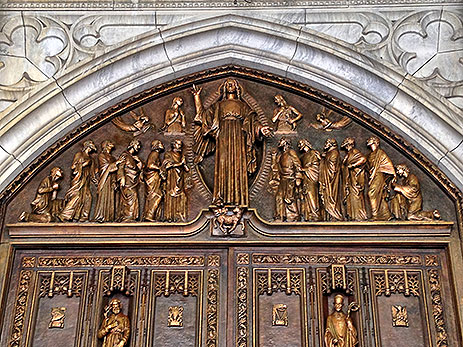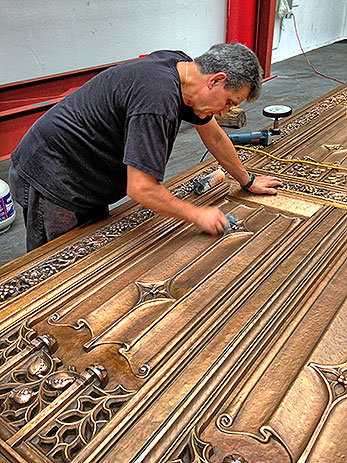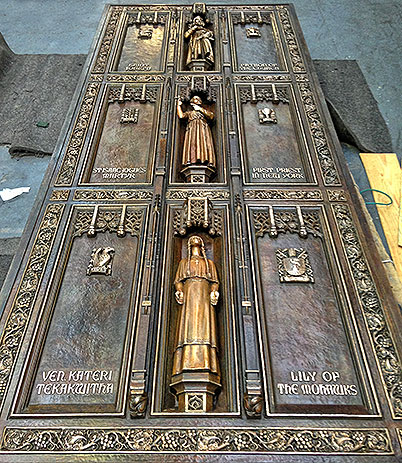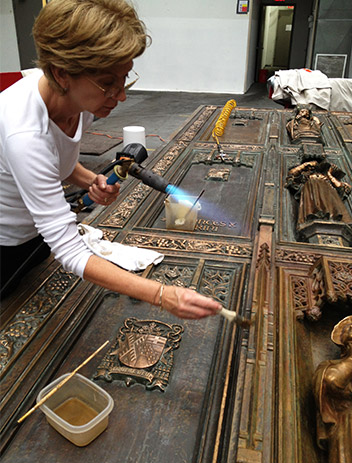New York , New York
Restoration
Architectural, and Bronze Conservators
G & L POPIAN, INCYonkers, New York
Architect
Murphy Burnham & Buttrick Arc.New York, New York
General Contractor
Structure Tone, Inc.New York, New York
Owner
St. Patrick's CathedralNew York, New York
The historic St. Patrick's Cathedral is adorned with multiple copper systems and copper alloy architectural structures, including seven massive, cast bronze double-leaf doors and fixed 40-foot transoms that are present at all elevations. Additionally, the cathedral has two 14-foot tall gothic finials atop its two narthex section spires and a 10-foot tall statue of Madonna located in the Lady's Chapel section of the roof. The cathedral also features coppersmith architectural structures, including an intricate roof spire adorned with angels, gothic floral decorations and roof crestings.
The large bronze doors adorning the Fifth Avenue main entrance are a late addition of the original 1949 wooden doors. The doors were fabricated and engineered following the blue prints of Charles Maginnis, which included hand-sculpted saints, religious figures, floral decoration and symbols executed by the sculptor John Angel.
When G & L Popian, Inc. was selected to work on this project, the company conceptualized and implemented a feasible philosophy and practice by returning the bronze doors to the level of significance they deserved. To select the most effective methodology, an analytical investigation of the external and internal structures was performed, which helped them understand the factors of decay. This investigation involved the removal of accumulated dirt, hazardous corrosion and obscuring paint layers. Retaining the interlocked original polychrome patinas during removal was a true challenge. The delicate restoration process enhanced the definition of the saints and of the decorative elements. G & L Popian believed the art of conservation should be humble in nature, respecting the historical values of the substrates while also respecting the original design. Essentially, their mission was to understand the chemistry of cleaning methods, which included using fire to apply protective coatings to the heated bronze surface. A molten alloy cast in a fire process was used, which embedded the artist’s talent, fingerprints, and tooling marks solidified for posterity.
Missing details—such as the curled, decorative staff of St. Patrick’s statue—were historically documented and then modeled in clay, prototyped using wax, and cast in bronze using a lost-wax technique before finally being welded into place. Each process employed the art of fire techniques.
Architectural Categories: Exotic or Unusual Applications, Interiors





